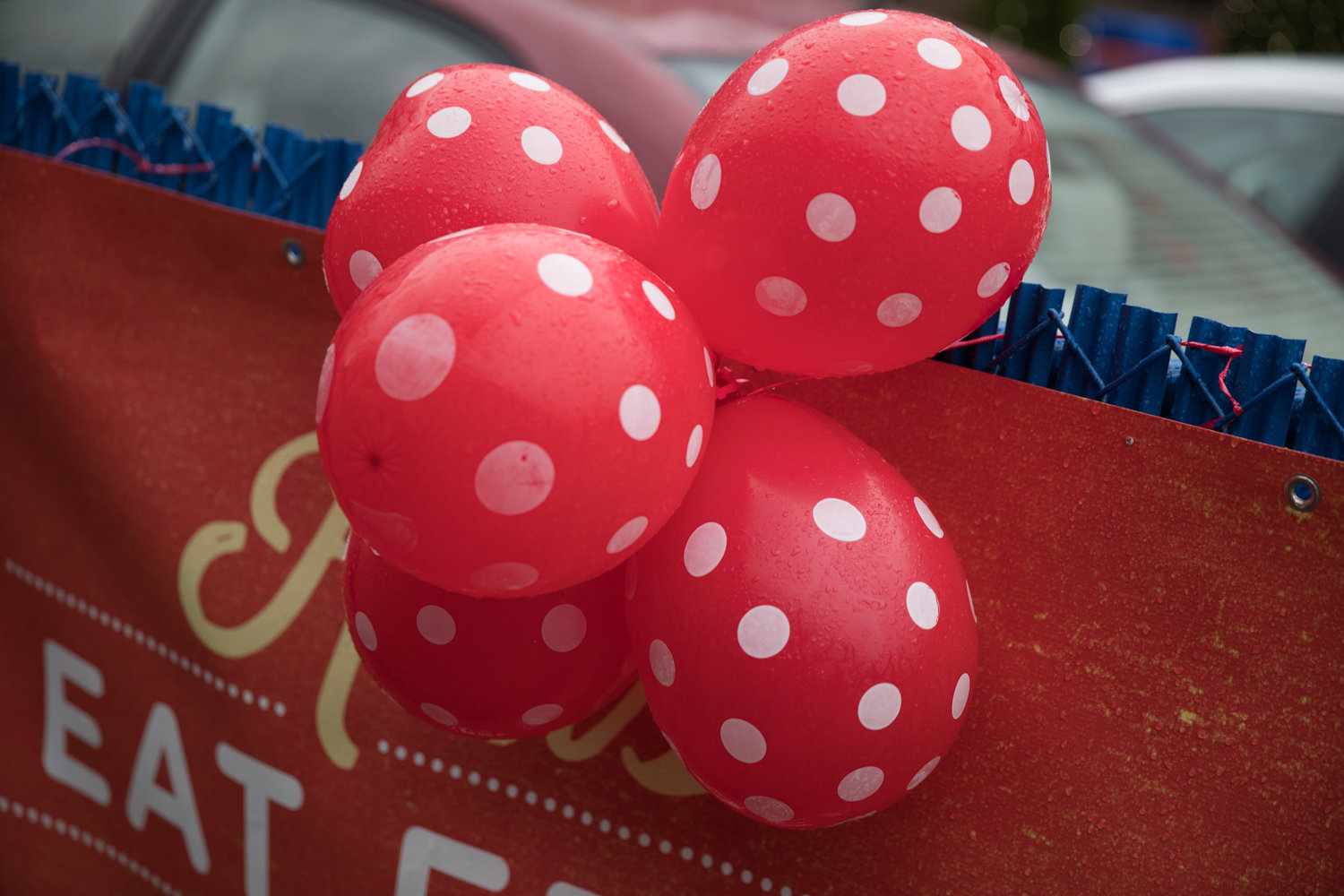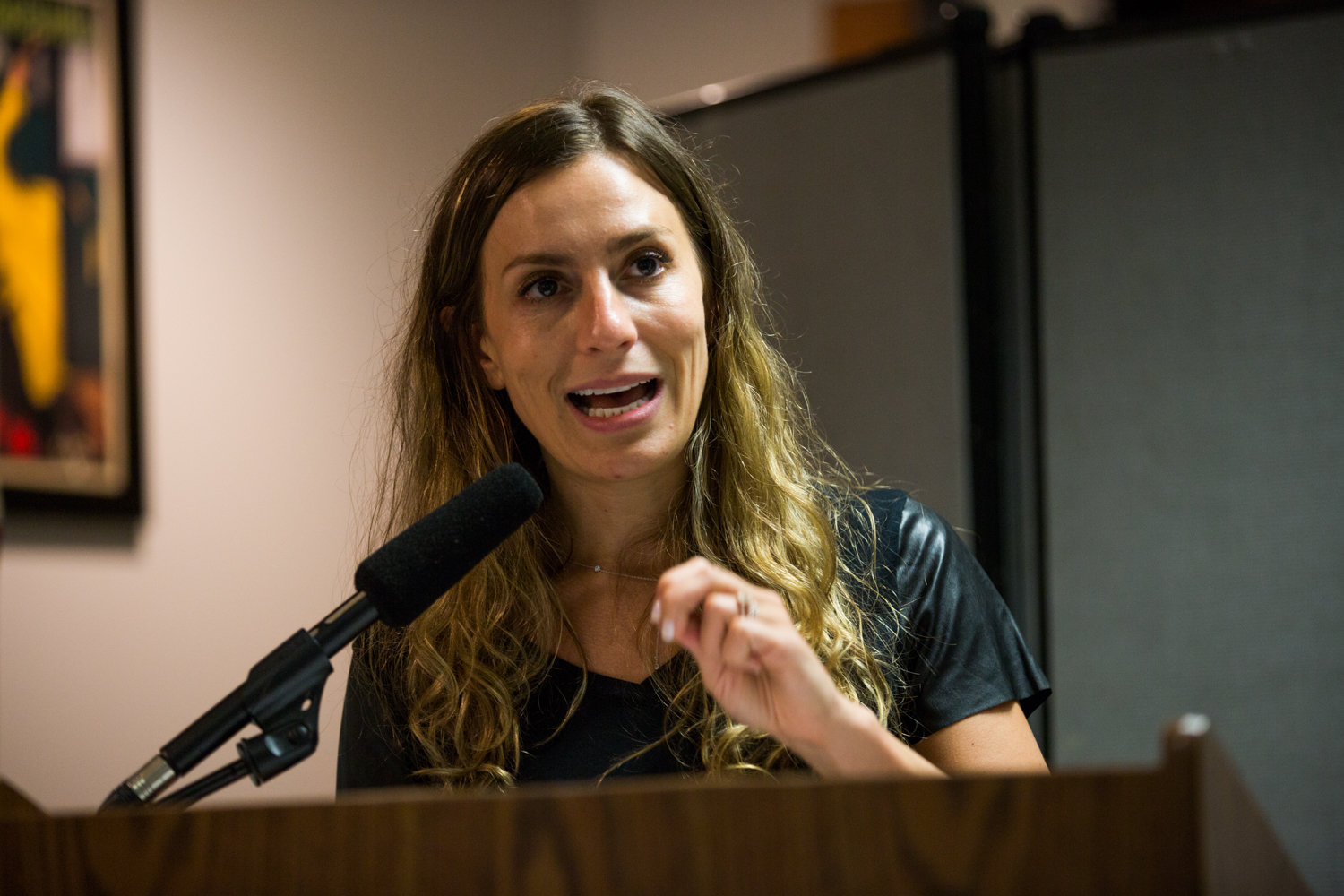99 red balloons won’t fly with Biaggi’s new bill
Ever seen a massive balloon release at a wedding or football game? It’s an impressive sight — all those colorful orbs flying majestically into the wild blue yonder.
Only what goes up must come down. In the 10 hours it takes helium to leak from a floating balloon, it drifts earthward, landing sometimes hundreds of miles from its release site.
It might be weird to think about balloons as a source of environmental pollution, but they are. Reading about the environmental risk led state Sen. Alessandra Biaggi to introduce legislation to ban the release of more than 25 balloons in a 24-hour period.
A balloon can wreak havoc. Some Mylar balloons contain a thin metal film, which makes it electrically conductive. If a Mylar balloon hits power lines, it could result in widespread power outages.
And if an animal eats pieces of a latex balloon, it’s not coming out the other end. The balloon gets lodged in its intestines, blocking its body’s ability to absorb nutrients. The animal dies a long, slow death.
The bill “is actually something that most people probably would say, ‘Oh, that’s nice,’ and then move on,” Biaggi said. “But in reality, we know that it takes two different ways to deal with the environment.”
The government can pass sweeping reform bills, she said, like the climate protection laws passed by the legislature and signed by the governor last year. They will hold businesses and governments accountable for environmental problems.
“But then there are the individual actions that we take every single day that reduce our carbon footprint,” she said.
Biaggi’s bill is similar to one introduced by state Sen. Brian Kavanagh, a Democrat representing lower Manhattan and western Brooklyn. His bill, introduced earlier this year, calls for a $10 fine for every balloon released over the limit of 25, with a maximum fee of $50,000.
Even before Biaggi introduced her bill, several other state governments have taken similar action. Virginia has a similar law, but the maximum number allowed is 49. California, Connecticut, Florida and Tennessee also prohibit mass balloon releases.
But smaller governments are getting on the bandwagon. In September, Maryland’s Queen Anne’s County passed an ordinance introduced by Commissioner Christopher Corchiarino that prohibits mass balloon releases. The all-Republican county commission passed the ordinance unanimously in August.
This wasn’t just an earth-friendly gesture, Corchiarino said.
“Along the waterways, the balloons would get tangled up in the wildlife,” he told The Riverdale Press. “For the agricultural community, if farmers were out plowing the fields and saw a balloon, they had to get off the equipment, remove it so it doesn’t get tied up in the machines, or get eaten by the livestock and horses, which would harm them.”
After learning about the problem, Corchiarino said he began noticing balloon fragments almost everywhere — in fields, trees, parking lots, sidewalks, and washed up on shorelines.
“So I introduced it as an ordinance in our county and I had people who called me up and said, ‘I thought you were crazy at first, but then I was out the water and I got two balloons that were floating out in the (Chesapeake) Bay, or I found three balloons, out in my backyard,’” Corchiarino said. “They said, ‘You know, I didn’t realize what an issue it was until you brought up.’”
It’s even led to Baltimore state Sen. Clarence Lam to introduce a bill for the same reason, Corchiarino said.
Danielle Vosburgh and her family volunteered to clean up the southeast Florida coastline for years. After seeing countless dead birds with their stomachs full of balloons — along with other plastic litter like fishing lines, bottles and bags — she felt compelled to speak out.
She went on to found BalloonsBlow.org, a site dedicated to dispelling some of what she calls misinformation from the balloon industry about the safety of their products. Latex balloons are not as safe as their manufacturers say, she said. It can take months or years for even the earth-friendliest balloons to begin degrading.
“We know most people realize it’s not OK to litter,” Vosburgh said. “We just have to get people to realize that’s what balloon releases are. We wouldn’t throw a bunch of balloons on the ground, so should we toss them in the air to land somewhere else?”
Although five states and several local governments have banned mass releases, laws tend to get “watered down” before going into effect, Vosburgh said.
The maximum cap on how many releases are allowed each day is raised. Even when people are caught releasing an illegal number of balloons, they’re rarely held accountable.
Still, a statewide ban in New York may be another brick in the wall of strong environmental protection laws, Biaggi said. She is considering backing more environmental legislation.
“And you know why? Because no matter where I go, if I’m talking to young people, one of the issues that they bring up as something they worry about is the environment,” Biaggi said. “And they ask questions like, ‘Is the world going to still be here when I grow up? Are the animals still going to be alive?’”
Biaggi introduced the bill in October, and it currently sits in the senate’s rules committee. Its companion bill in the lower chamber was introduced by Suffolk County Assemblyman Steve Englebright.
CORRECTION: The website founded by Danielle Vosburgh to speak out against the use of latex ballons in the environment is located at BalloonsBlow.org. A story in the Jan. 2 edition provided an incorrect URL.













